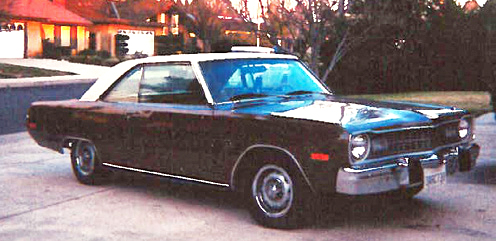What Was Heaven in 1997?
By Colby Martin
 |
|
| In 1997, my teenage ego was put in check by this aging Dodge Dart “Swinger.” It was a dependable set of wheels while another project was in the works. Once my grandfather’s ’58 Ford F-100 pickup received a “mild custom” treatment and became my full-time ride, the trusty Dart left my hands for good. | |
|
|
|
The summer of 1997 may have been my longest ever. It’s hard to believe that was a whole 20 years ago. With a driving learner’s permit in hand, not a moment passed that I wasn’t dreaming of what would lie ahead. A three-month break from school with four-wheeled freedom was within one revolution of the sun at that point. Those days just before being able to take the wheel alone were tough, granted, but they taught me a new kind of patience.
Soon I was occupied with a summer job at the local water park, experienced dating woes and held the keys to a well-worn ’73 Dodge Dart laden in factory root-beer brown. The “Swinger” model to be exact. It had that hippie flower which dotted the letter “I” on the fender’s metal script. It packed a 225ci slant 6, an automatic trans and a cracking white vinyl roof. Totally gutless and the antithesis of the day’s trends. The modest hardtop looked like it came straight out of an episode of the “Wonder Years” TV show. At least it had factory MOPAR “rallyes” at the corners. Despite its lack of redeeming qualities, I felt so lucky to have a car to drive.
As the ’90s were making way for Y2K, the automotive realm was itself becoming re-energized. Detroit’s “Big 3” automakers were creating exciting new offerings for the first time in a generation. Trucks and utility vehicles were beginning to enjoy the popularity that is now commonplace. The import scene that inspired The Fast & The Furious films was heating up near my home in Southern California. So-called “supercars,” the pinnacle of street-driven performance machines, were rapidly evolving into “hyper cars.” Interest in vintage vehicles of all kinds seemed to blossoming like never before. No matter one’s preference in taste or style, auto aficionados were treated to a bountiful host of choices. Last but not least, our beloved hobby was binding together to form the national legislative voice known as the SEMA Action Network (SAN).
As I’ve uncovered the roots of the SAN, I can see parallels in my own life. It’s true that car keys and an open road provide adolescents a newfound freedom and accountability. In many ways, the growing pains of managing these unfamiliar responsibilities are similar to those of a budding advocacy group. Both require time, patience and a little trial and error—well, maybe more than a little. How you manage those struggles can be the difference between success and failure.
Whether you are a veteran advocate or new to the party, let the SAN’s momentous anniversary fully soak in. The group’s formation has been documented in the cover story of this very Driving Force issue. We will continue telling the story of the SAN over the next few issues. Consider for a moment the enormous amount of coordination it’s taken from thousands of individuals to amass our hobby’s unified force. We all have much to be proud about. To those that have participated in the efforts to create fair automotive laws over the years, thank you! You’re helping ensure that tomorrow’s drivers can also enjoy collector vehicles, old and new, just as we do now. Here’s to the next 20 years!
